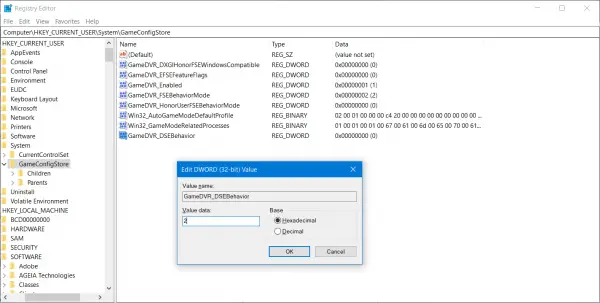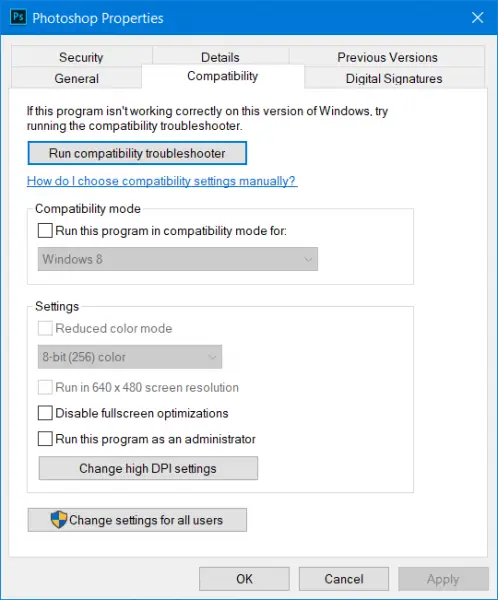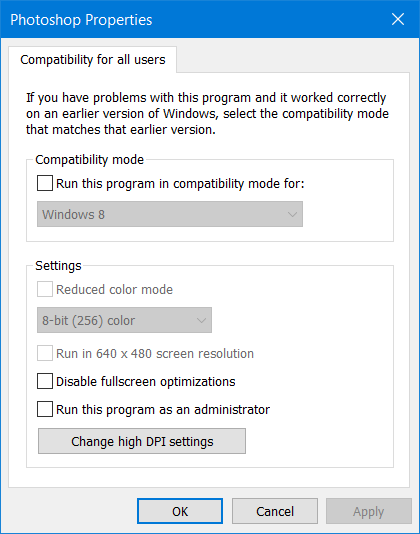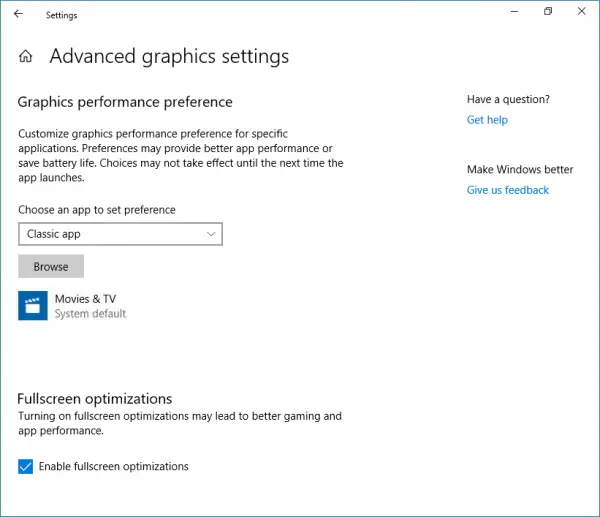Full-Screen Optimizations is a feature on Windows devices that help them function better. It is enabled by default for applications like video players and games. When this feature is enabled, the gaming or video playback experience is enhanced by prioritizing the CPU and GPU resources for that particular process. But sometimes, it results in a drop in the frame rate (FPS) when in full-screen mode. The solution to fix these frame drops would be to disable these full-screen optimizations. But unfortunately, Microsoft has removed this features for Windows 11/10 in the recent releases – but there is still a way you can get this done.
Enable or disable Full-screen optimizations in Windows 11/10
In this guide, we will cover the following ways:
- Using the Registry Editor.
- Applicable to a particular set of users.
- Applicable for all the users.
- Using Windows 10 Settings.
1] Using the Registry Editor
Hit the WINKEY + R button combination to launch the Run utility, type in regedit and hit Enter. Click on Yes for the UAC or User Account Control Prompt that you get.
Once Registry Editor opens, navigate to the following key location-
HKEY_CURRENT_USER\System\GameConfigStore
Now right click on Explorer. Select New > DWORD (32-bit) Value.

Name the newly created DWORD to GameDVR_DSEBehavior and hit Enter to save it.
Double click on the GameDVR_DSEBehavior DWORD and set its value to the following depending on your choice,
- 2: Disable Fullscreen optimizations.
- 0: Enable Fullscreen optimizations.
After you are done setting a value, close the Registry Editor and Reboot your computer for the changes to take effect.
2] Applicable to a particular set of users
Start by locating the main executable file of the application or game for which you need to enable or disable the fullscreen optimizations.
Right-click on the located executable file and click on Properties. Switch the tab labeled as Compatibility. Under the section labeled as Settings.

Check the option labeled as Disable fullscreen optimizations in order to disable the feature and vice versa for the opposite.
Click on Apply and then click on OK for the settings to be applied.
3] Applicable to all the users
Start by locating the main executable file of the application or game for which you need to enable or disable the fullscreen optimizations.
Right-click on the located executable file and click on Properties. Switch the tab labeled as Compatibility.
Click on the button labeled as Change settings for all users on the bottom part of the mini window.

Under the section labeled as Settings.

Check the option labeled as Disable fullscreen optimizations in order to disable the feature and vice versa for the opposite.
Click on Apply and then click on OK for the settings to be applied.
4] Using Windows Settings (Earlier Windows 10 releases only)
For earlier releases, you can follow this method. This method is not available for releases starting Windows 10 v1803.
Launch the Windows 10 Settings app. Now, navigate to System > Display. Scroll down a bit and click on the Graphics Settings link. This will open the Advanced Graphics settings page.

Under the section labeled as, Fullscreen optimizations, uncheck the option labeled as Enable Fullscreen optimizations to disable the feature.
Was that helpful?
Leave a Reply